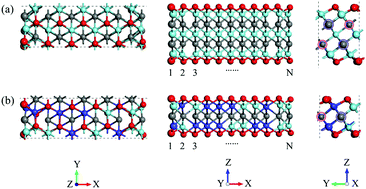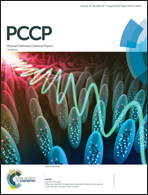MXene nanoribbons as electrocatalysts for the hydrogen evolution reaction with fast kinetics†
Abstract
MXenes, a new class of two-dimensional materials, arouse great interest due to their diverse chemistries, superior electrical conductivity and stability. Recently, the nanostructures of MXenes such as nanoribbons and nanodots have been synthesized in experiments, which show peculiar properties and expand the application spectrum of MXenes. Here we exploited MXene nanoribbons as potential electrocatalysts for the hydrogen evolution reaction (HER) by considering 12 kinds of MXene systems. Our first-principles calculations showed that the edges of the MXene nanoribbons can adsorb hydrogen species and serve as the reaction sites for hydrogen evolution. The binding strength of the ribbon edge is correlated with the d band center of metal atoms in MXenes. In particular, the nanoribbons of Ti3C2 and solid solution (Ti,Nb)C exhibit high activity for the HER with the adsorption free energy approaching zero and Tafel barrier below 0.42 and 0.17 eV, respectively. The low barrier is owing to the prominent charge transfer from the edge metal atoms to the H* reactants in the transition state. These theoretical results illuminate the principle for designing MXene nanostructures for electrocatalysts with fast kinetics, and shed light on the utilization of MXenes with more than one metal element for a broad range of electrochemical reactions.

- This article is part of the themed collection: 2018 PCCP HOT Articles


 Please wait while we load your content...
Please wait while we load your content...